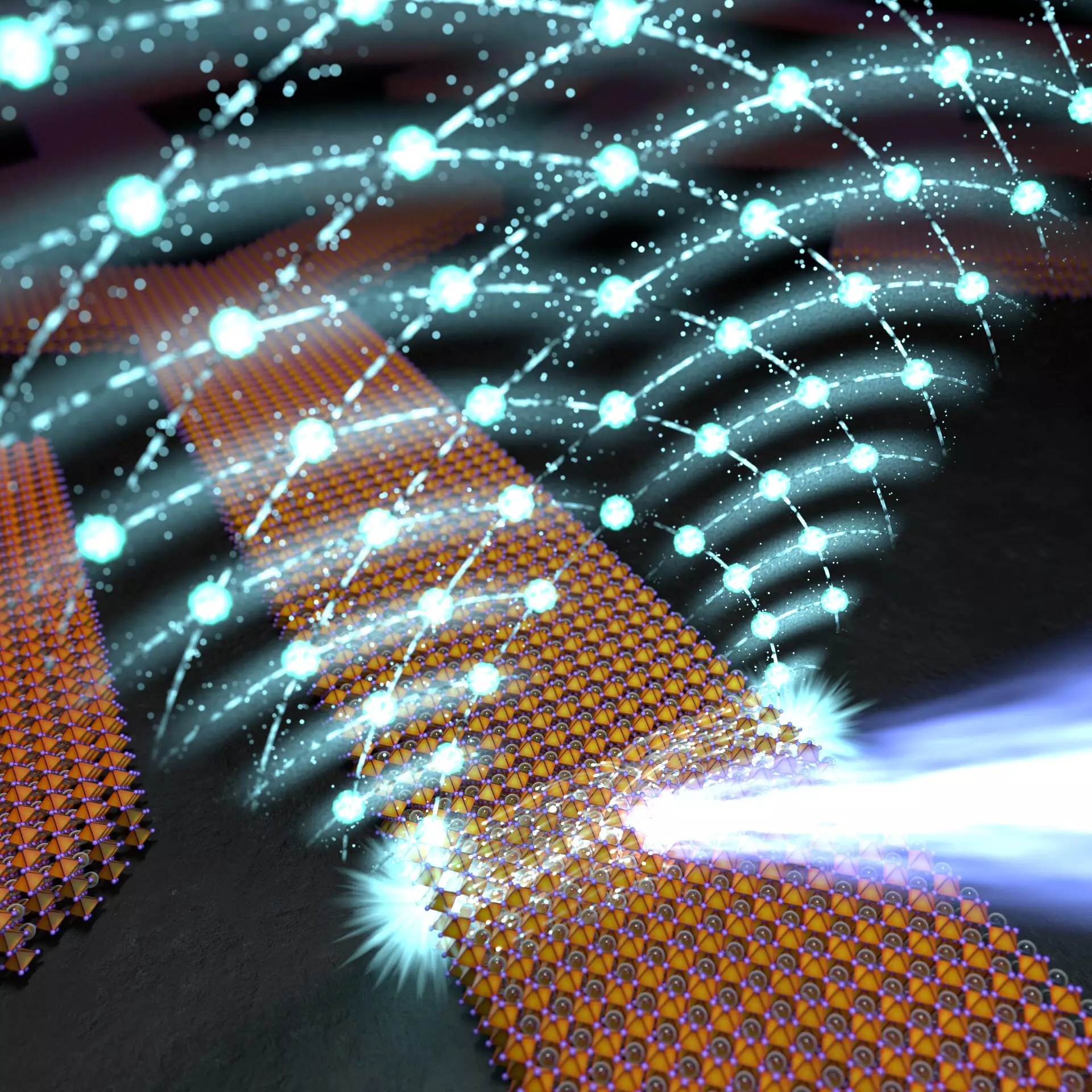In the dynamic field of photonics, the intersection of classical and quantum signal processing is opening new frontiers, particularly with the advent of integrated photonic circuits that can operate efficiently at room temperature. Recent research spearheaded by scientists at the Faculty of Physics at the University of Warsaw, in collaboration with international teams from Italy, Iceland, and Australia, has made significant strides in this area. Their work, highlighted in the prestigious journal *Nature Materials*, revolves around the innovative use of perovskite crystals. These uniquely shaped crystals are being heralded as multifunctional components that could redefine the roles of waveguides, couplers, splitters, and modulators in nonlinear photonics.
At the heart of this groundbreaking research is the ability to create perovskite crystals with highly specific shapes and dimensions. Utilizing scalable synthesis methods and a microfluidic approach, the researchers were able to grow these crystals from solutions within polymer molds, allowing for intricate designs that can accommodate various optical functions. This method drew on optimal control of solution concentrations and growth temperatures, while saturating the environment with solvent vapors to ensure high-quality crystal growth.
One of the key materials utilized in this research is CsPbBr3 (cesium-lead-bromide), which exhibits remarkable semiconductor properties. Professor Barbara Piętka, a leading figure in the project, underscores its high exciton binding energy and oscillator strength, which facilitate enhanced light interactions. This capability is essential for lowering the energy requirements for nonlinear light amplification, which is pivotal for advancing both classical and quantum photonics.
A particularly exciting aspect of this research is the discovery of the edge lasing effect, which is tied to the formation of a condensate of exciton-polaritons—quasiparticles that embody characteristics of both matter and light. This phenomenon marks a significant departure from traditional lasing, as it occurs in a regime of strong light-matter coupling. The researchers have demonstrated that this condensate can maintain a high level of coherence between emitted light signals, which is crucial for applications in integrated photonic circuits.
Mateusz Kędziora, a doctoral student and the paper’s first author, emphasizes the significance of these high-quality crystals in forming Fabry-Pérot type resonators. The ability to observe strong nonlinear effects without external mirrors presents a pivotal advancement in the field, potentially leading to more compact and efficient photonic devices.
The implications of these findings are vast, particularly with the potential for compact “on-chip” systems capable of performing advanced computational tasks. The research team anticipates that their work could facilitate the development of devices that handle single-photon operations, integrating nanolaser technology with waveguides and other components on a single chip. Such innovations could pave the way for advancements in both classical and quantum computing, tackling complex problems that current technologies struggle to address.
Moreover, the findings also suggest that perovskite crystals could be compatible with existing silicon technologies, vastly improving their commercialization prospects. This compatibility means that the transition from research to practical applications could be more seamless, potentially revolutionizing the way we approach various technological challenges today.
As the research emphasizes, the discovery of unique properties of perovskite structures allows for the long-distance travel of exciton-polaritons within the crystals. This could mean that emitted light is capable of transmitting across air gaps to neighboring structures, further enhancing the interconnectivity crucial for photonic circuits.
The collaboration between diverse experts, including those working on theoretical models and simulations, has bolstered the understanding of how these newly formed resonators operate. The ability to visualize photonic modes through advanced calculations opens up avenues for future exploration and optimization of integrated circuits.
The advancements made by the University of Warsaw’s research team highlight a pivotal moment in the realm of photonic technologies. With innovative crystal formation techniques and promising materials like CsPbBr3, the future of nonlinear photonics appears brighter than ever. As the implications of these findings unfold, we may well be witnessing the dawn of a new era, where integrated photonic circuits play an indispensable role in our technological landscape.


Leave a Reply